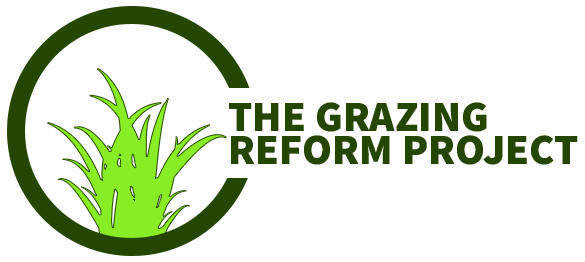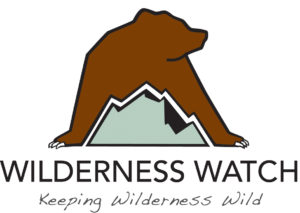Best Practices
Unlike a factory discharging waste through a pipe into a stream, livestock grazing impacts to water quality are non-point sources of water pollution. Other "non-point" sources include logging, road construction, road maintenance, and recreation. Below you can view and download a variety of documents which describe those management practices which research and experience indicate are effective at controlling water pollution resulting from livestock grazing if they are properly applied. Learn what good grazing management entails by taking a look at the reports, studies, and presentations in this section.
Because activities which can cause "non-point source" water pollution are wide-spread across western landscapes, they are difficult to regulate as compared to distinct "point sources" like sewage plants and factories. For that reason, regulation of non-point source pollution under the Clean Water Act has lagged far behind point source regulation. To control water pollution from non-point source activities like livestock grazing, regulators rely on public land managers and livestock owners to implement Best Management Practices (BMPs) which research and experience have shown are effective in controlling water pollution if applied correctly in the appropriate locations.
Best Practices for controlling non-point water pollution are supposed to be specific; they describe and prescribe specific actions for specific locations and conditions. When it comes to grazing, however, the Forest Service has substituted planning and administrative processes for actual Best Management Practices like rest-rotation grazing systems, regular herding, and riparian exclusion fencing. In this section you will find links to Forest Service process BMPs as well as to BMPs which are actual practices which research and experience teach are effective if properly implemented in appropriate locations. The BLM's "Grazing Management Processes and Strategies for Riparian Wetland Areas" and the "Cardinal Rules" presented there describe state-of-the-art practices for managing livestock grazing in a manner which adequately protects water quality, riparian areas and wetlands from grazing-related degradation.
- Forest Service process BMP’s for all non-point sources of water pollution, including grazing, are found on page 81 to 84 of National Best Management Practices for Water Quality Management on National Forest System Lands, Volume 1: National Core BMP Technical Guide. The Technical Guide can be read online or downloaded at this link. The US EPA defines non-point source as “any source of water pollution that does not meet the legal definition of ‘point source’ in section 502(14) of the Clean Water Act.” Point source "means any discernible, confined and discrete conveyance, including but not limited to any pipe, ditch, channel, tunnel, conduit, well, discrete fissure, container, rolling stock, concentrated animal feeding operation, or vessel or other floating craft, from which pollutants are or may be discharged.” In other words, nonpoint source pollution is pollution that is not delivered to a stream through a “discrete conveyance” like a pipe or ditch. Learn more about non-point sources of pollution at this link.
- The US EPA has a web page dedicated to “Pasture, Rangeland, and Grazing Operations - Best Management Practices (BMPs)” which contains good information and links to other information sources. The terms “management measures” and “management practices” are also used by EPA when referring to best management practices. US EPA also lists management measures for controlling non-point agricultural pollution including grazing on the Agriculture Chapter Factsheet for the Coastal Zone Act Reauthorization Amendments of 1990 (CZARA). CZARA “requires coastal states (including Great Lakes states) with approved coastal zone management programs to address nonpoint pollution impacting or threatening coastal waters.” Coastal waters are defined as encompassing the watersheds of all rivers and streams which discharge to the ocean.
- There are dozens of web pages, guides and other publications dedicated to informing and educating livestock owners about best management practices for livestock grazing. Many of them focus on best practices for managing grazing in riparian areas. Some of the best publications are from state agricultural extension departments and land grant universities. This link will take you to the Riparian Best Management Practices web page of SARE, the Sustainable Agriculture Research and Education, a program of the US Department of Agriculture.
- The best and most widely used guide to managing public land grazing in ways that protect riparian areas and water quality is Grazing Management Processes and Strategies for Riparian-Wetland Areas, which incorporates approaches and practices taught by the interagency National Riparian Service Team. The publication includes CARDINAL RULES FOR PLANNING AND MANAGING LIVESTOCK GRAZING IN RIPARIAN AREAS which is the best short guide to how the Forest Service and BLM should manage public land grazing in order to adequately protect water quality and riparian habitat. Unfortunately, while Forest Service managers pay lip service to these rules, most of them have not been applied on the dozens of national forest grazing allotments which the Project has monitored for several years.
- Every public land grazing allotment which the Project has monitored employs what is known in the grazing literature as summer-fall passive continuous grazing. Livestock managers place their cattle on the public lands in July and return in mid-October to pick them up. No herding of the cattle to rotate them among the various pastures of an allotment typically occurs. Some grazing permit holders even let their cattle wander home on their own in the fall, driven down by rain or snow. According to the National Riparian Service Team, when an area is grazed throughout the summer and fall with “little or no effort to control the amount, duration, or distribution of livestock use in particular areas…..riparian areas will usually be overgrazed.” As we have often pointed out in our Allotment Monitoring and other Reports, in the dry portions of headwater meadow ecosystems where most Northern California public land grazing occurs“passive continuous grazing” also devastates native bunchgrasses. Bunchgrasses native to the American West are particularly sensitive to repeated grazing during a single grazing season. That is why the Natural Resources Conservation Service (NRCS) recommends to grazing managers that deferred rotation, rest rotation, and intensive deferred rotation are grazing systems that are “appropriate” for native bunchgrasses; passive continuous grazing is not appropriate because it results in native bunchgrasses being eliminated from the preferred locations where livestock which is not herded remain for long periods. You can read or download the NRST Guidelines for Native Bunchgrasses at this link.


